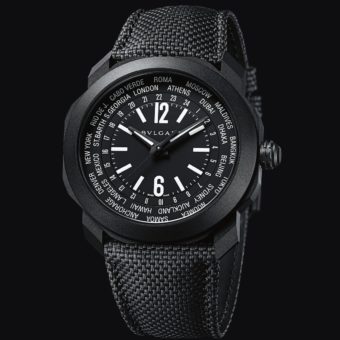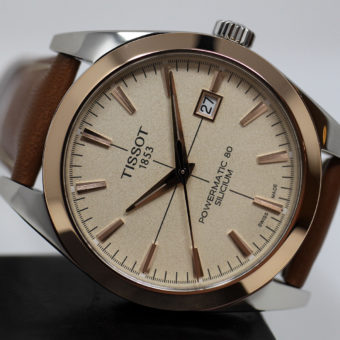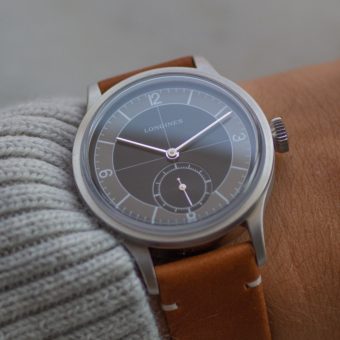Today on “Vintage Eye,” we’ll be focusing our gaze on Alpina’s new Startimer Pilot Heritage Chronograph, a neo-vintage bicompax monopusher chronograph released earlier this fall. This new model takes its inspiration from a 1970s helmet-style case design common in racing watches during the era — like this Bulova seen below via Analog/Shift— and an older-style monopusher, coming together to develop a unique watch uncommon at its price point.
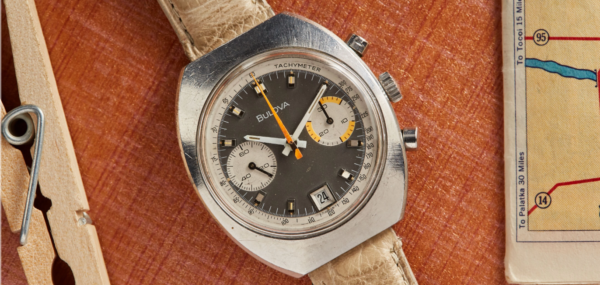
The Startimer Heritage Pilot uses a 42-mm wide stainless steel “helmet” style case, comprised of brushed and polished facets. At the two o’clock position its single chronograph pusher used for starting the mechanism, stopping it, and resetting it, with a signed crown just below it. The dial is available in three color options, the first a silvered white option with two anthracite subdials evoking the panda dial aesthetic which is particularly popular on neo-vintage chronographs; and the other two use a blue sunray dial with silver registers, differing only in the colors of their hands and their tachymetric scales. This scale is angled on the outer edge of the face, while printed markers are used for each minute, with applied metal markers accented with Super-LumiNova used at each hour position. The model has two subdials, one for running seconds at 9 o’clock, the other for a 30-minute chronograph counter at 3 o’clock. Sweeping over the dial, with the printed Alpina logo at the top, are two slim hands accented with lume, while a simple pointer tallies chronograph seconds.
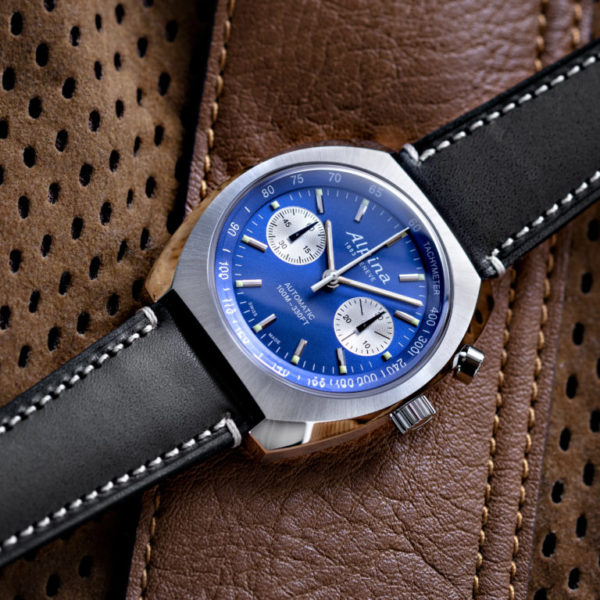
Inside the watch is Alpina’s Caliber AL-727, a monopusher-chronograph-equipped automatic mechanism designed by La Joux-Perret. The movement oscillates at a frequency of 4 Hz and is capable of a 55-hour power reserve; as in most of Alpina’s neo-vintage watches this movement is protected by an engraved caseback, providing it with a 100-meter (330 feet) water resistance. The new model is currently priced by the brand at $2,795, and while it is currently sold out through Alpina’s online store, it is expected to be restocked digitally, and in boutiques globally, soon.
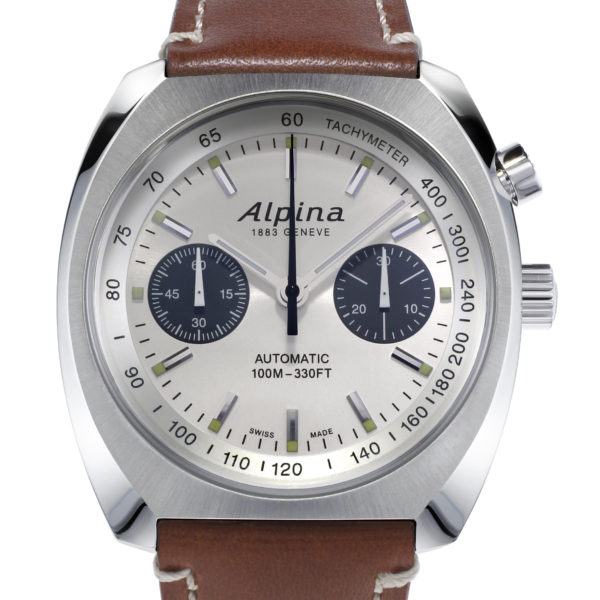
While Alpina has existed as a brand since 1883, there isn’t a large amount of evidence that this particular style of watch was produced in the 1970s by the Genevan manufacturer. This is not to say it couldn’t have been — as Alpina did use helmet-style cases for its chronographs during the era, and this model’s monopusher style of chronograph had risen in popularity since the late 1960s (most memorably with the Omega Chronostop) — but there is a noticeable lack of photographic evidence. Nonetheless, the new model does feature a good amount of vintage-inspired designs, most obviously in the style of case, but certainly on the dial, with its bi-compax design, color scheme, tachymetric scale, applied hour markers, and slim hour and minute hands.
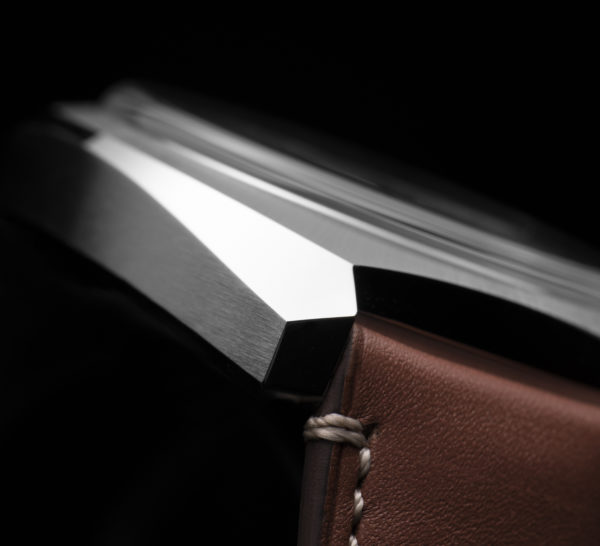
Interestingly, Alpina eschewed adding a date window to this model, working to keep the model simpler and cleaner while also differentiating it from historical racing chronographs that used this design, and typically included a calendar complication. This difference is in line with many of the company’s neo-vintage models, in which Alpina clearly strives to pay homage to historical models, but makes very subtle and under-the-radar changes that generally add to the overall aesthetic. Other modern differentiating factors can also be seen in the overall finishing of the model, its use of both brushed and polished metal, and the use of the monopusher mechanism — which, while seeming to be a modern addition, nonetheless recalls a vintage trait.
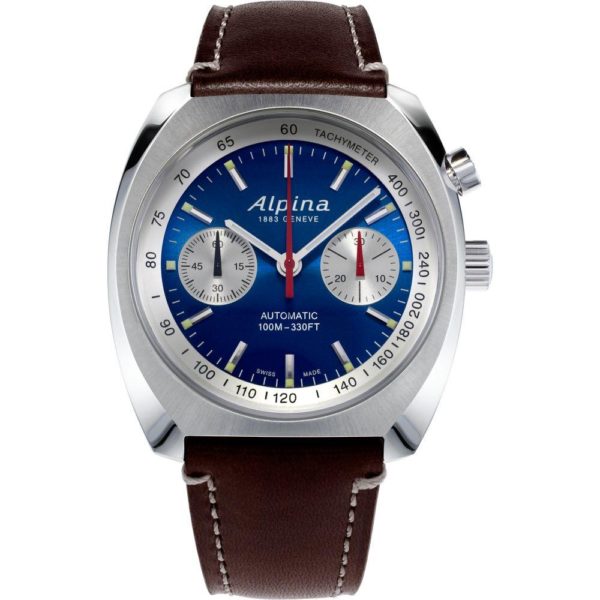
The new chronograph is the latest neo-vintage addition to Alpina’s growing Startimer collection, the previous addition being the original Pilot Heritage watch, launched in 2018, which used a 70’s-style alarm-watch design remixed into a modern mechanical GMT. The new monopusher shows a continued effort by the brand in this space, with Alpina once again recalling their historical designs to create something new and unique. The watch is also rare in this price range, with few— if any— other brands offering such a high-quality monopusher chrono for under $3,000.
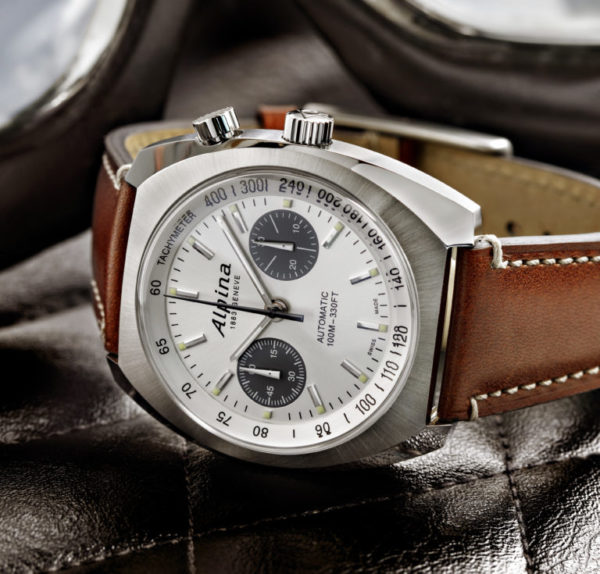
For the most recent article in the “Vintage Eye” series, in which we discuss the Dan Henry 1962 Racing Chronograph and the historical watches that inspired it, click here.
Caleb Anderson is a freelance writer with a primary focus on vintage watches. Since first discovering horology, he has garnered extensive knowledge in the field and spends much of his time sharing his opinions among other writers, collectors, and dealers. Currently located near New York City, he is a persistent student in all things historical, a writer on many topics, and a casual runner.

